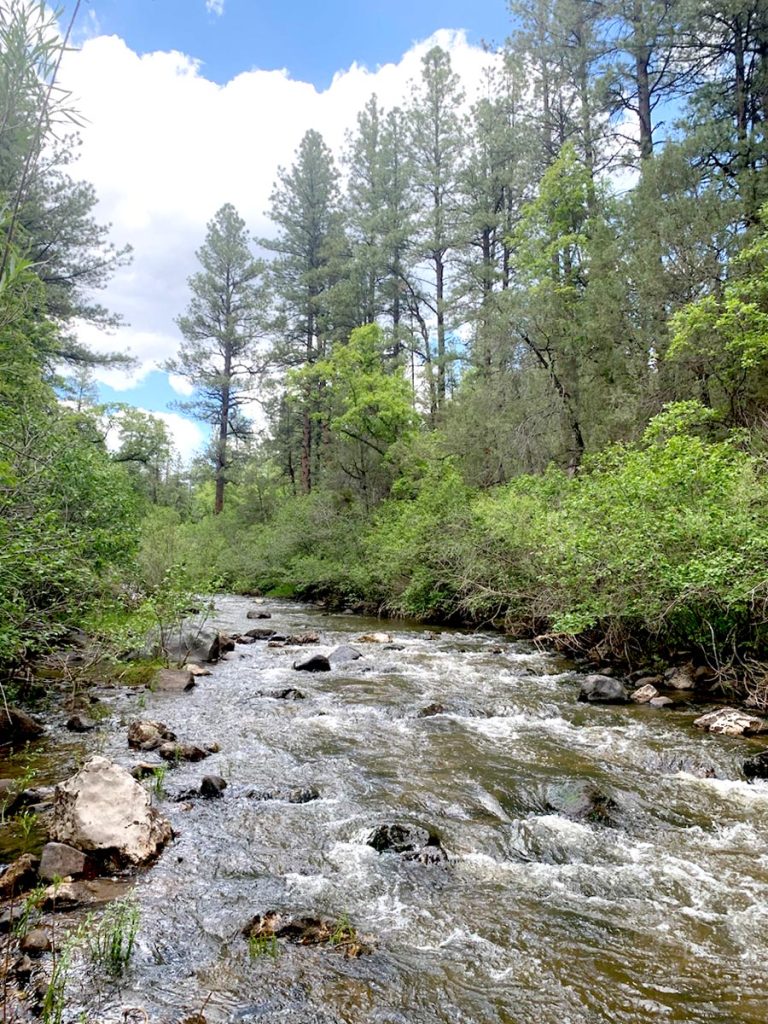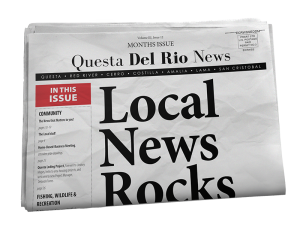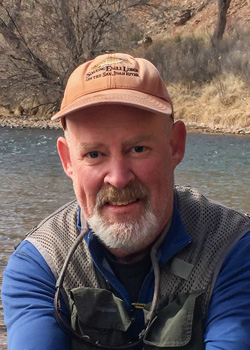With some rain finally falling in Santa Fe, my nights have vastly improved. I sleep under the sheets instead of on top of them. I wake up with hope in my heart, not so grumpy as in July. My ganas (desires) to go fishing are coming back to me.

This spring, cool and sometimes drizzly, spoiled us. Everything was so clean and green, and the air didn’t smell so hot and piney as it did last winter and spring. when everything was so crispy and went up in flames. Before the recent heat wave kicked in, it was actually too cold for good fishing. Runoff just wouldn’t finish.
How quickly we forget, especially these days with climate change news on every television and computer screen, how the weather can whip your head around. As New Mexicans especially, we are accustomed to making it from one scorching hot day to the next. At least one would think. Like sweat dripping into our eyes, climate change catastrophizing, if not climate change itself, may have blurred our vision.
Again, it really wasn’t that long ago, around seven weeks by my count, that a day in the New Mexico outdoors was quite comfortable. My best fishing day was on the Rio Guadalupe on the south slope of the Jemez. Many don’t know that this delightful small stream has the most prolific, and one of the only hatches of salmonflies in the whole state.
The salmonfly is a species of stonefly that is noteworthy for its enormous size. At about two-and-a-half inches long, it’s a big bite of food that turns normally shy and selective trout into bona fide idiots. That was what happened on my Guadalupe adventure in early June, with fish after fish racing up to gobble my big orange dry fly.
Since the Taos area streams were still running high, I focused on the Jemez through the rest of the month. I had another great day on the Rio Cebolla, where some ranchers and Trout Unlimited are collaborating on a project to improve wildlife habitat along the creek. The meadows were in gorgeous shape after the fat winter; the brown trout fishing was decent, though challenging due to the long grass drooping across the stream channel. My fishing partner and I ran into some cows doing what cows do. Not too long after, the cows’ owner drove up and chased his herd up the hill where the grass was just as lush.
A week or so later, July’s heat stormed in like Will Smith rushing the stage to slap Chris Rock. My family took a fishing trip to the San Juan River near Aztec, about the last place one might want to go in the middle of an epic heat wave. Of course the silver lining is that the San Juan is an extremely cold river. We were assured, in other words, that the swimming, if not the fishing, would be fantastic. As it turned out, the fishing was fantastic indeed, and the swimming was pure bliss.
It also turned out that we had unwittingly traveled into the epitome of climate change context. The San Juan basin is one of the richest oil and gas fields in America, and also, like Taos County, the locus of a robust outdoor recreation economy. Petroleum production has literally fueled that economy, just as recreation has raised awareness of the threat climate change poses to our treasured outdoor playgrounds.
The basin was also home to a host of thriving Anasazi communities, of which the ruins at Aztec, Chaco Canyon, Mesa Verde, and other settlements are all that remain. A common theory is that severe heat and drought – a 300-year event that gripped much of North and South America – was the root cause of the Anasazi’s abandonment of the area. The drought caused famine, possibly warfare, and migration to less hostile environments like the Rio Grande Valley. In the face of monumental hardship, the people adapted.
As we too should adapt, and I’m confident we can do it. We’re New Mexicans after all, and we’ve been through this before. Still, a little rain wouldn’t hurt.




